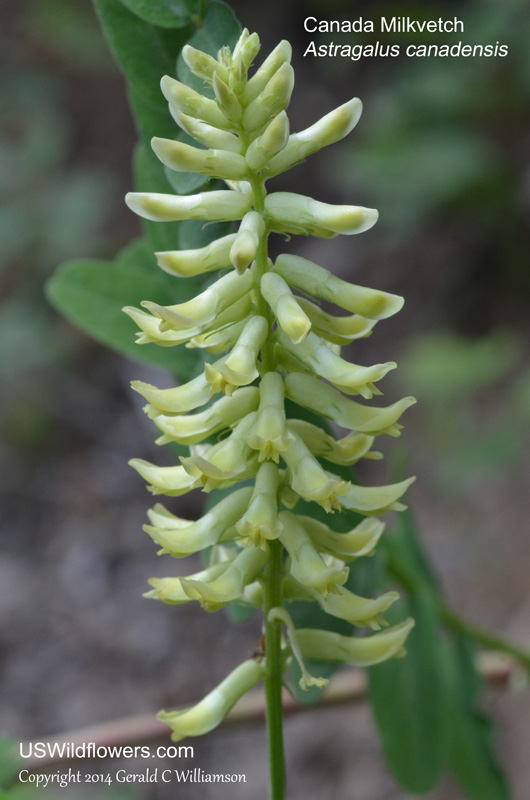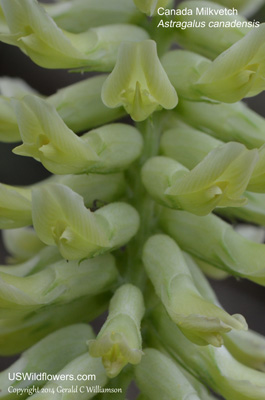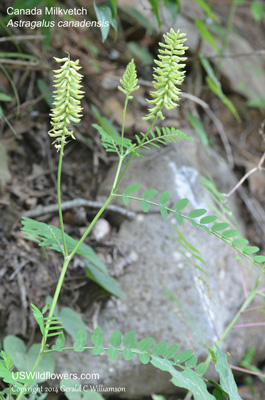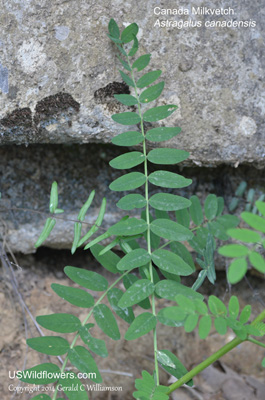Wildflowers of the United States | |||||||||||||
| |||||||||||||
Astragalus canadensis - Canada Milkvetch, Little Rattlepod. The Astragalus - Milkvetch - genus is huge with over 2300 species worldwide and more than 400 species in the United States. I have photographed a couple of Milkvetches in Idaho, but with over 60 candidate species in Idaho, identification to the species was intimidating. I had almost decided just to publish a genus page rather than a species page when I heard about the general location of the plant presented on this page. Since there are only three Astragalus species known in Georgia, and two of those are in the coastal plains, confirming the identity of this one by location - there is only one location in Georgia where has been found - and using other attributes only for confirmation became rather easy.
Astragalus canadensis is one of the more widespread species of Milkvetch, being found in open woods and riverbanks throughout most of the United States except New England, Florida, and Arizona. It is also found in most of its namesake country, Canada.
| Found in: AL, AR, CA, CO, CT, DC, GA, IA, ID, IL, IN, KS, KY, LA, MD, MI, MN, MO, MS, MT, NC, ND, NE, NJ, NM, NV, NY, OH, OK, OR, PA, SC, SD, TN, TX, UT, VA, VT, WA, WI, WV, WY Leave comments on Astragalus canadensis at this link.  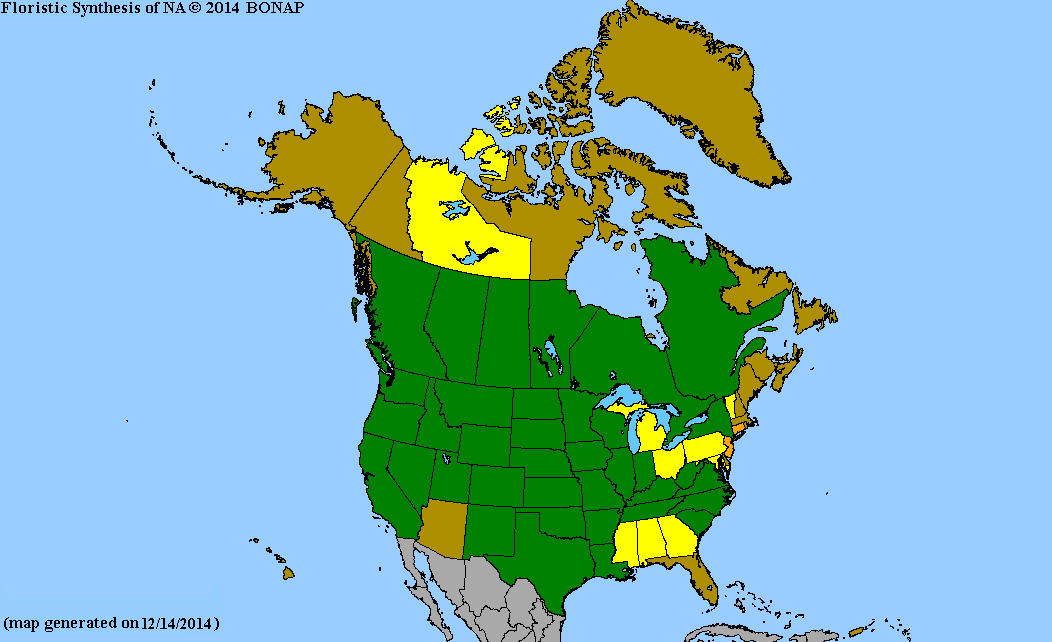 Map courtesy of The Biota of North America Program. Map color key Search Our Database: Enter any portion of the Scientific, Common Name, or both. Do a general Google search of the entire site: #ad
| #ad
| | ||||||||||
|
Commercial / Cookie Notice Looking for Wildflowers for a specific state? Check here: | |||||||||||||
|
All content except USDA Plants Database map Copyright Gerald C. Williamson 2025 | |||||||||||||
Code Update 20230302

